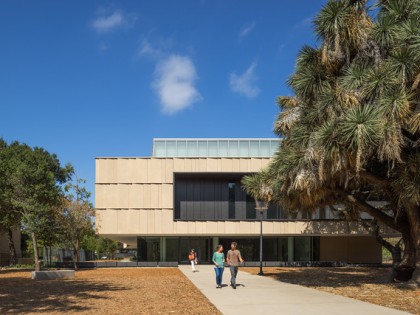In less than a month, Stanford University will unveil one of the largest and most valuable gifts in its history, the blue-chip Anderson collection—121 mostly Abstract Expressionist works by 86 artists—including paintings by Jackson Pollock, Willem de Kooning, Franz Kline, Mark Rothko, Clyfford Still, and Ellsworth Kelly, to name a few. There are also a number of works that represent movements in California art, including Bay Area Figurative and Light & Space.
The collection was assembled over the course of 50 years by Bay Area collectors Harry W. and Mary Margaret Anderson along with their daughter Patricia Anderson Pence. The Andersons, originally from the East Coast, met at college in upstate New York and were married in 1950. They began collecting art in the early 1960s after a trip to Paris, including visiting the Louvre. Later they were drawn to the work of living artists, many of whom they befriended and hosted at one time or another, including Still, Robert Rauschenberg, and Frank Stella. At a press lunch to announce the gift last year, a slideshow presentation included a shot of Jackson Pollock’s large mural Lucifer (1947) hanging in daughter Patricia’s childhood bedroom above her stuffed animals and dolls.
Now these works will be exhibited in a dedicated building on the Stanford campus specially designed for the collection by Ennead Architects. It will open to the public on September 21 and admission is free. The Anderson Collection building (see “Stanford University Adds Third Building to New Arts District“) will be located at the entrance to the campus, adjacent to the Cantor Arts Center. It is the latest addition to Stanford’s newly created arts district, which includes the recently opened Bing Concert Hall and the McMurty Building for the department of art and art history.
Jason Linetzky, the longtime director of the collection, is overseeing the move of the works to the new building and has also been named as the first director of the collection in its new home. Linetzky met the Andersons while enrolled in a summer drawing class at the San Francisco Art Institute when he answered a small job posting at an art supply store. He first helped as a part-time coordinator for the build-up to a major SFMOMA show they were lending to.
Linetzky told artnet News: “As I learned more about the family and their collection and had the pleasure to work with such amazing people and art, it became clear that I should find a way to remain involved.” Since then he has worked with the collection in a wide range of capacities, including overseeing care and control of the 800-plus objects in the collection, providing tours, working with art history graduate student interns, and managing relationships with galleries and institutions.
Among the most memorable Anderson acquisitions, he notes, are two ceramic works by California artist John Mason, one of which will be in the collection at Stanford (Spear Form, Ember). Mason began working in Los Angeles in the 1950s with Peter Voulkos and “developed revolutionary ways for communicating contemporary ideas in clay,” says Linetzky. “Mason has consistently worked in this medium and the Andersons have been collecting California ceramics since the late 1960s,” he adds.
Linetzky said plans for the museum moved ahead swiftly once the gift was announced. “The Andersons were so excited to see the collection in a new home, and Stanford was eager to debut the collection as an anchor of the new arts district.” Asked what was the biggest challenge, he said: ” Effectively translating the atmosphere of the Anderson home to a major museum, while at the same time creating a flexible space that would allow the collection to be experienced in unique ways. Knowing the collection so well helped immensely when designing the new space, and we had a wonderful team in our architects, Ennead.”
His main hope for the collection: “That the Anderson Collection at Stanford University will become a place people return to time and again.”





